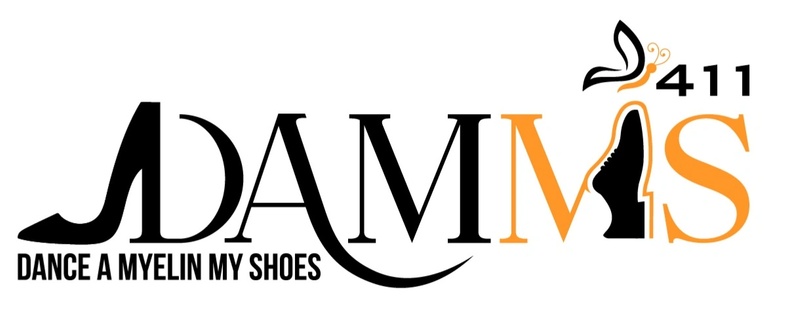DAMMS 411 is excited to present an MS Panel Interview on World MS Day 05/30/26

Join us to experience an uplifting and motivational atmosphere as panel members share their passion for supporting others with Multiple Sclerosis (MS) through their personal stories.
Our main goal is to create a movement within the MS community, similar to a powerful tsunami wave that generates enough energy to help those with MS rise above limiting perceptions. In this community, we quickly learn that we cannot do it alone and must draw strength from one another.
May this movement grow so significantly that we can help lift our peers over the crest of the wave, allowing us all to enjoy a smoother and more enjoyable journey together.
Meet your Panel Members -

Phoebe Walker
Meet Phoebe Walker from Florida, USA.
Diagnosed with multiple sclerosis (MS) in November 2001,
Currently diagnosed with relapsing remitting MS and competes in ballroom dancing.
Additionally, Phoebe is the founder of DAMMS411, INC. and MS Rising.

Cheryl Hile
Meet Cheryl Hile from Washington, USA.
She was diagnosed with multiple sclerosis (MS) on October 24, 2006. Currently living with secondary progressive MS and participates in competitively running full marathons.

Adam Powell
Meet Adam Powell from Michigan, USA.
He was diagnosed with Primary Progressive Multiple Sclerosis (MS).
To learn more about Adam, click the links below:

Tim Salmon
Meet Tim Salmon from California, USA.
He was diagnosed with multiple sclerosis (MS) on May 5, 2003, and currently lives with secondary progressive MS. Tim participates in prone paddleboarding on the open ocean.

Thomas Szymanski
Meet Thom Szymanski, from Maryland, USA.
He was diagnosed with multiple sclerosis (MS) on May 1, 2024, with relapsing-remitting MS (RRMS). Thom competes in adaptive CrossFit Games.

Dave Johnson - Panel Moderator
Meet Dave Johnson, from DC USA.
He was diagnosed with multiple sclerosis (MS) on
Additional details coming soon

Doctor Susan Payrovi - Panel Speaker
Meet Dr. Susan Payrovi, from California USA.
She was diagnosed with multiple sclerosis (MS) on
Additional details coming soon

Closing speaker, coming soon
Meet , from USA.
diagnosed with multiple sclerosis (MS) on
Additional details coming soon
Additional Information
This event serves as a call to action for individuals with a shared health condition: Multiple Sclerosis (MS). The central theme will emphasize the importance of taking action while partnering with like-minded individuals who radiate positivity. Together, we aim to help others, like us, to cultivate a joyful and productive life, even while living with MS.
Our inaugural MS Day panel interview is currently in development. This page is designed to provide a brief overview of the event, introduce the panelists, and create a platform for individuals to submit questions in advance. These questions will be answered during the event. If not all questions can be addressed live, this platform will also be available for seeking answers after the event.
The long-term objective of this event is to establish it as a live, in-person gathering that will alternate between locations on both sides of the Atlantic Ocean. In alignment with our commitment to serve the global multiple sclerosis (MS) community, fundraising for this initiative will be directly donated to the MS International Federation, an organization with a worldwide operational scope.
Click here to ask questions
This section will become available January 1, 2026
MS International Federation Educational Materials


Hav
Copyright © 2022 DAMMS 411 (Dance A Myelin My Shoes) - All Rights Reserved.
***Medical Disclaimer - This website is for informational purposes only and is not intended to be a substitute for professional medical advice, diagnosis, or treatment. Before starting any kind of new physical workout regimen, first seek approval from a licensed medical provider. If you think you may have a medical emergency, dial 911.
DAMMS411, LLC
8700 ASTRONAUT BLVD. # 82 - CAPE CANAVERAL, FL 32920
